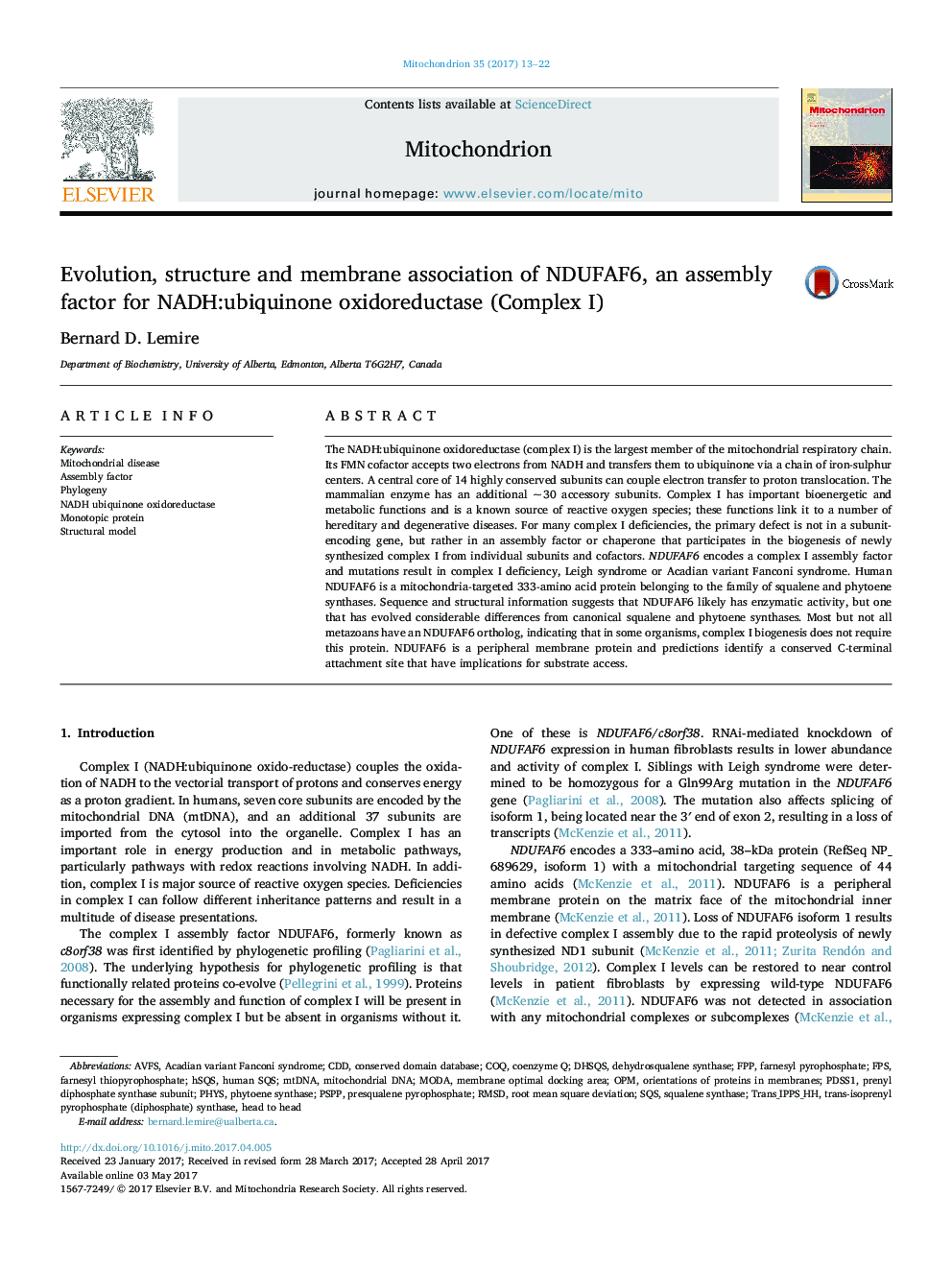| Article ID | Journal | Published Year | Pages | File Type |
|---|---|---|---|---|
| 5519668 | Mitochondrion | 2017 | 10 Pages |
â¢Eukaryotic NDUFAF6 proteins are likely of alphaproteobacterial origin.â¢NDUFAF6 is not essential for complex I biogenesis in all eukaryotes.â¢NDUFAF6 models have a large central cavity that can accommodate isoprenoid substrates.â¢NDUFAF6 is predicted to insert into the membrane via a C-terminal helical region.â¢Membrane attachment would place the entrance to the active site cavity well above the membrane surface.
The NADH:ubiquinone oxidoreductase (complex I) is the largest member of the mitochondrial respiratory chain. Its FMN cofactor accepts two electrons from NADH and transfers them to ubiquinone via a chain of iron-sulphur centers. A central core of 14 highly conserved subunits can couple electron transfer to proton translocation. The mammalian enzyme has an additional ~Â 30 accessory subunits. Complex I has important bioenergetic and metabolic functions and is a known source of reactive oxygen species; these functions link it to a number of hereditary and degenerative diseases. For many complex I deficiencies, the primary defect is not in a subunit-encoding gene, but rather in an assembly factor or chaperone that participates in the biogenesis of newly synthesized complex I from individual subunits and cofactors. NDUFAF6 encodes a complex I assembly factor and mutations result in complex I deficiency, Leigh syndrome or Acadian variant Fanconi syndrome. Human NDUFAF6 is a mitochondria-targeted 333-amino acid protein belonging to the family of squalene and phytoene synthases. Sequence and structural information suggests that NDUFAF6 likely has enzymatic activity, but one that has evolved considerable differences from canonical squalene and phytoene synthases. Most but not all metazoans have an NDUFAF6 ortholog, indicating that in some organisms, complex I biogenesis does not require this protein. NDUFAF6 is a peripheral membrane protein and predictions identify a conserved C-terminal attachment site that have implications for substrate access.
